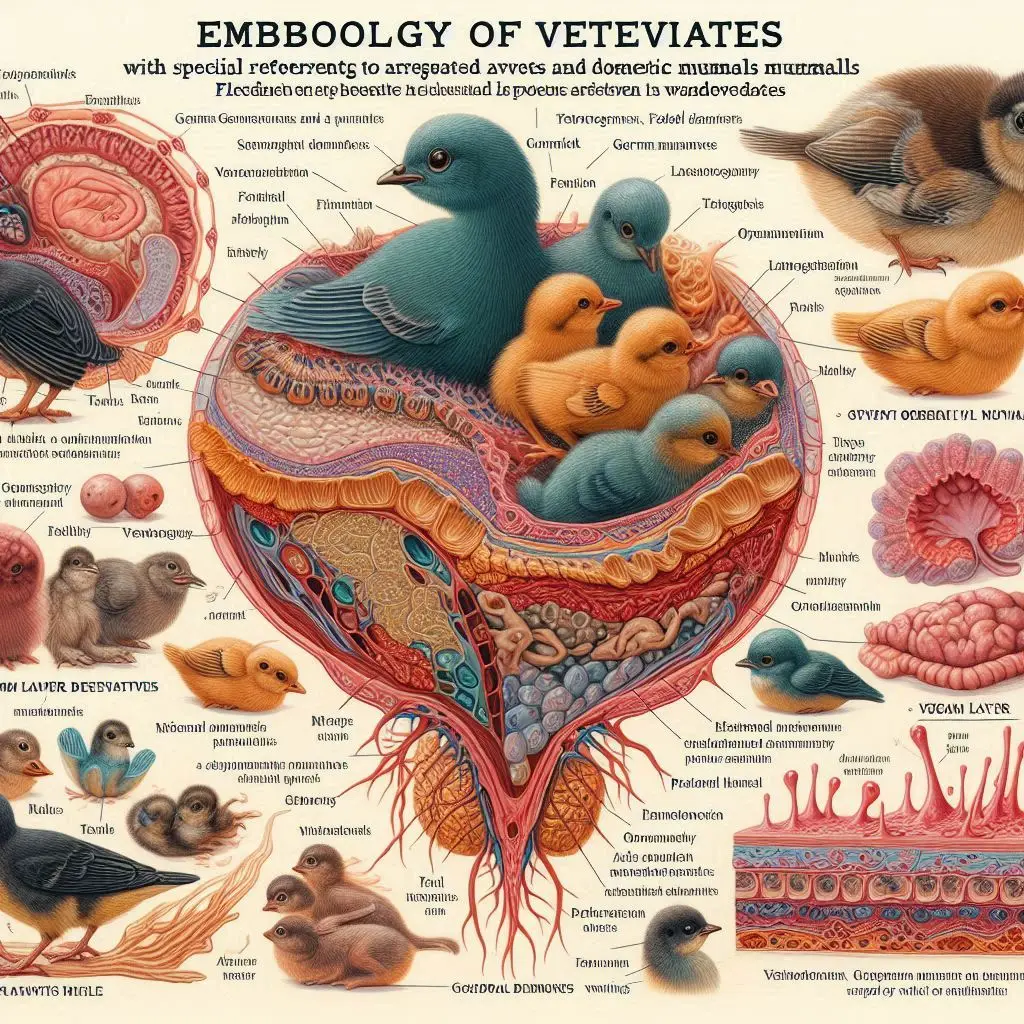Cotyledonary Placenta in Ruminants

What is a Cotyledonary Placenta?
The cotyledonary placenta is characterized by distinct structures known as cotyledons on the fetal side and corresponding caruncles on the maternal side. These structures form attachment points that enhance nutrient exchange between the mother and her offspring.
Structure of the Cotyledonary Placenta
- Cotyledons: These are specialized projections from the fetal chorion. They interdigitate with maternal caruncles to form functional units called placentomes.
- Caruncles: These are raised areas on the maternal endometrium (the inner lining of the uterus) that connect with cotyledons. Each caruncle corresponds to a cotyledon.
- Placentomes: The combination of one cotyledon and one caruncle forms a placentome. This structure is critical for nutrient transfer.
For more detailed information about placentomes, you can visit Veterinary Clinics.
Function of the Cotyledonary Placenta
The primary function of the cotyledonary placenta is to facilitate efficient nutrient transfer from mother to fetus. This process occurs at the placentomes where maternal blood vessels come into close contact with fetal blood vessels.
- Nutrient Exchange: The cotyledons are highly vascularized, allowing for effective transfer of oxygen and nutrients while minimizing direct contact between maternal and fetal blood.
- Hormonal Support: The placenta also produces hormones that support pregnancy, such as progesterone and estrogen.
- Waste Removal: The cotyledonary placenta aids in removing waste products from the fetal blood back to the mother’s circulation.
For more insights into hormonal functions during pregnancy, check out PubMed.
Developmental Characteristics
Gestation Timeline
The development of cotyledons begins early in pregnancy:
- In cattle, cotyledons start forming around gestational day 16.
- In sheep, there is rapid growth during the first 80 days of pregnancy.
This early development ensures that by mid-gestation, sufficient structures are in place to support fetal growth.
Number of Cotyledons
Ruminants typically have between 72 to 125 cotyledons depending on species:
- Cows usually have around 70-100.
- Sheep have about 90-100.
- Goats can have similar numbers but may vary based on breed.
Understanding these numbers helps in managing reproductive health in livestock.
Evolutionary Advantages
The cotyledonary placenta offers several evolutionary advantages:
- Efficient Nutrient Transfer: The design allows for better nutrient absorption compared to other types of placentas.
- Support for Multiple Pregnancies: Ruminants often give birth to twins or triplets. The cotyledonary structure supports this by providing multiple attachment points for nutrient exchange.
- Adaptation to Grazing Habits: Ruminants have evolved to consume a high-fiber diet that requires efficient nutrient absorption during gestation.
For more on evolutionary adaptations in ruminants, see ScienceDirect.
Comparison with Other Placental Types
Diffuse Placenta
In species with diffuse placentas (like pigs and horses), attachment points are spread over a larger area rather than being concentrated as in ruminants. This can lead to less efficient nutrient transfer.
Zonary Placenta
Zonary placentas (found in dogs and cats) have a band-like structure for attachment. While effective, they do not provide as many attachment points as the cotyledonary placenta does.
Discoidal Placenta
In primates and rodents, discoidal placentas attach at a single disc-shaped area. This type also differs significantly from ruminant placentation.
For further reading on different types of placentas, check out Encyclopedia Britannica.
Importance in Veterinary Medicine
Understanding the cotyledonary placenta is crucial for veterinarians working with livestock:
- Reproductive Health Management: Knowledge about placentation helps manage breeding programs effectively.
- Pregnancy Monitoring: Veterinarians can monitor fetal development through ultrasound examinations focused on placentomes.
- Nutritional Needs: Recognizing how nutrition impacts fetal development can lead to better dietary recommendations for pregnant ruminants.
For veterinary resources on livestock management, visit Merck Veterinary Manual.
Conclusion
The cotyledonary placenta is an essential adaptation for ruminants that enhances nutrient transfer during gestation. Its unique structure allows for efficient support of multiple pregnancies while reflecting evolutionary adaptations necessary for survival in various environments. Understanding this complex system benefits both animal health professionals and livestock producers alike.
By learning about the intricacies of the cotyledonary placenta, we can appreciate how nature has optimized reproductive strategies in ruminants.
More from Veterinary Anatomy:
Cell Inclusions




Responses